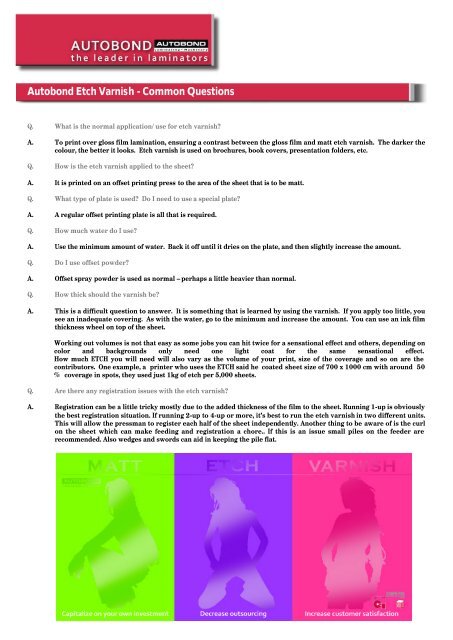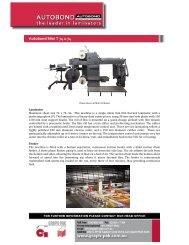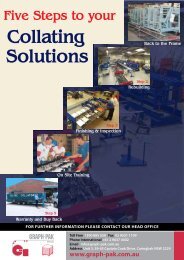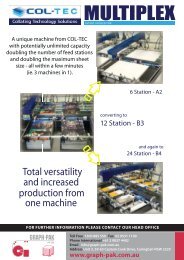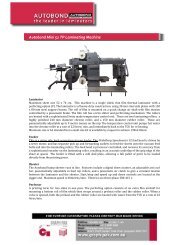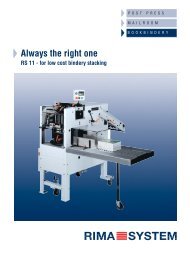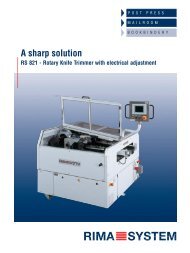Autobond Etch Varnish ~ FAQ - Graph-Pak Australia
Autobond Etch Varnish ~ FAQ - Graph-Pak Australia
Autobond Etch Varnish ~ FAQ - Graph-Pak Australia
Create successful ePaper yourself
Turn your PDF publications into a flip-book with our unique Google optimized e-Paper software.
<strong>Autobond</strong> <strong>Etch</strong> <strong>Varnish</strong> - Common Questions<br />
Q. What is the normal application/use for etch varnish?<br />
A. To print over gloss film lamination, ensuring a contrast between the gloss film and matt etch varnish. The darker the<br />
colour, the better it looks. <strong>Etch</strong> varnish is used on brochures, book covers, presentation folders, etc.<br />
Q. How is the etch varnish applied to the sheet?<br />
A. It is printed on an offset printing press to the area of the sheet that is to be matt.<br />
Q. What type of plate is used? Do I need to use a special plate?<br />
A. A regular offset printing plate is all that is required.<br />
Q. How much water do I use?<br />
A. Use the minimum amount of water. Back it off until it dries on the plate, and then slightly increase the amount.<br />
Q. Do I use offset powder?<br />
A. Offset spray powder is used as normal – perhaps a little heavier than normal.<br />
Q. How thick should the varnish be?<br />
A. This is a difficult question to answer. It is something that is learned by using the varnish. If you apply too little, you<br />
see an inadequate covering. As with the water, go to the minimum and increase the amount. You can use an ink film<br />
thickness wheel on top of the sheet.<br />
Working out volumes is not that easy as some jobs you can hit twice for a sensational effect and others, depending on<br />
color and backgrounds only need one light coat for the same sensational effect.<br />
How much ETCH you will need will also vary as the volume of your print, size of the coverage and so on are the<br />
contributors. One example, a printer who uses the ETCH said he coated sheet size of 700 x 1000 cm with around 50<br />
% coverage in spots, they used just 1kg of etch per 5,000 sheets.<br />
Q. Are there any registration issues with the etch varnish?<br />
A. Registration can be a little tricky mostly due to the added thickness of the film to the sheet. Running 1-up is obviously<br />
the best registration situation. If running 2-up to 4-up or more, it’s best to run the etch varnish in two different units.<br />
This will allow the pressman to register each half of the sheet independently. Another thing to be aware of is the curl<br />
on the sheet which can make feeding and registration a chore.. If this is an issue small piles on the feeder are<br />
recommended. Also wedges and swords can aid in keeping the pile flat.
Q. How many sheets can I put on a stacker?<br />
A. If you don’t have IR dryers, you need to rack the print in lifts of 10 mm / 4”, depending on the thickness of paper. It<br />
takes approximately 2 hours to dry to touch when IR dryers are used or 10 hours to dry to touch when IR dryers are<br />
not used.<br />
Q. Do I use special film on the laminator?<br />
A. Most films can be used – OPP, PET, or Nylon, so long as the dyne level is 40 or over (anthing less may alter the final<br />
result). However, film quality, age and temperature during processing will influence your results, so some internal<br />
trialing should be performed to find the best combination.<br />
Q. What are the advantages over spot UV, and gloss over matt film?<br />
A. Matt film is nearly twice the cost of gloss, and it scuffs very easily. <strong>Autobond</strong> <strong>Etch</strong> <strong>Varnish</strong> can be printed on any offset<br />
press with a regular plate – spot UV must go to a specialist screen press with UV dryers. In comparison with screen<br />
printing, you can achieve a much tighter register with offset printing.


